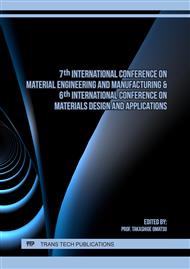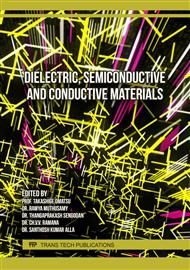p.119
p.129
p.139
p.145
p.157
p.163
p.175
p.181
p.189
The Production of Hematite Powder from Spent Pickling Hydrochloric Acid
Abstract:
This research aimed to study the recycling process and the feasibility of recovering iron as hematite or red oxide powder (Fe2O3) from spent pickling acid (hydrochloric acid). The spent hydrochloric acid waste from the pickling bath in the sheet rolling steel industry contains approximately 233 g of iron dissolved in one liter of the spent acid. To recover iron, 2 M NaOH was added to the spent acid until reaching pH 7. The iron was precipitated as iron oxide and/or hydroxide. Next, the oxidation of ferrous oxide was carried out by adding H2O2 35%v/v to control the shade color. The precipitates were subsequently separated from the acid solution by a filter press. The precipitates were dried at 110°C for 24 h and calcined at 700°C for 2 h to synthesize and modify the crystallinity of ferric oxide. Ferric oxide was subject to water washing, where contaminating sodium chloride could be dissolved and filtered out. After drying at 110°C for 24 h, high-purity hematite was achieved. Hematite recovered from the spent pickling acid via this process provided more than 97% purity at 94.4% recovery.
Info:
Periodical:
Pages:
181-187
Citation:
Online since:
October 2023
Price:
Сopyright:
© 2023 Trans Tech Publications Ltd. All Rights Reserved
Share:
Citation:



